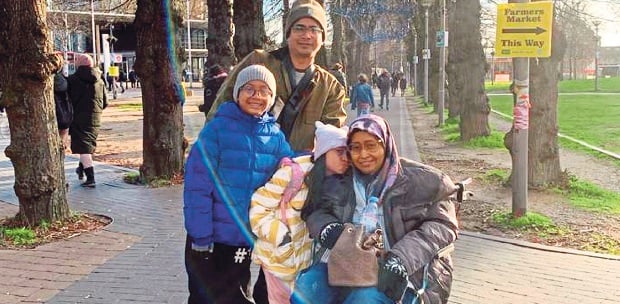The new school term recently kicked off across the United Kingdom (UK), and for many students, it marks the return to classrooms with fresh school uniforms, a tradition that has always carried a sense of excitement.
For those of us from a certain generation, the process of selecting and trying on school uniforms, coupled with the invigorating scent of new clothes fresh from their plastic covers, evokes cherished memories. This excitement is deeply rooted in the pride of being associated with one's school — a sense of belonging that transcends mere attire.
However, in some UK schools, this sense of identity and belonging has taken a unique twist.
A few months ago, an incident stirred discussions when a student arrived at school wearing a cat mask and furry tail, playfully engaging with friends by "meowing and purring", while they stroked her head and tickled her chin.
It wasn't a dress-up or play-acting day; it was a reflection of a growing phenomenon known as "furries" — people with a keen interest in animal characters with human traits.
Both teachers and parents received guidance not to ridicule or overreact to such expressions in the UK's classrooms. Instead, they were advised by a government-backed safeguarding group to create an environment where children feel comfortable expressing themselves.
As schools commence a new term, some have chosen to move away from traditional gender labels in school uniforms. Instead, they offer students the choice of gender-neutral outfits.
Stevensons, a prominent school uniform provider, declared its commitment to gender-neutral clothing in 2019, no longer marketing uniforms for boys or girls.
A survey of 550 schools that the provider supplies to revealed that most schools in the UK have adopted gender-neutral uniform policies.
These policies allow children to select clothes based on their gender identity.
One school in Guildford has intentionally avoided specifying uniform items based on gender, enabling all pupils to wear what they feel most comfortable in or what best reflects their self-identified gender.
This approach includes options like "Uniform A", featuring a white open-neck blouse with a skirt or trousers, and "Uniform B", which includes a shirt, tie, jacket, and trousers, with a hint of a "Uniform C".
These changes in school uniforms are just one facet of the myriad issues that schools, colleges, and parents in the UK are grappling with.
Challenges related to toilets and changing rooms have emerged, along with the complex question of which pronouns to use in classrooms and school compounds.
Parents are understandably concerned about policies stating that all pupils have the right to use the toilet corresponding to their gender identity, leading to the installation of gender-neutral toilets to replace single-sex facilities.
The elimination of urinals is a notable change in these gender-neutral facilities, which now provide bins and dispensers for sanitary products.
Home Secretary Suella Braverman has weighed in on how schools should address gender-related matters, sparking controversy with her statement that schools have no legal obligation to comply with students' gender preferences.
She suggested that schools could refuse transgender children the right to wear the uniform or use the toilet corresponding to their stated gender, and schools that no longer provide single-sex toilets might be in violation of the law.
All these issues, including the usage of pronouns, continue to be the subjects of ongoing discussions.
As generations like mine were raised with the use of "he", "she", "they", and "it", it is easy to imagine the spirited debates taking place around dinner tables when grandchildren return home with stories of their experiences at school or on the playground.







